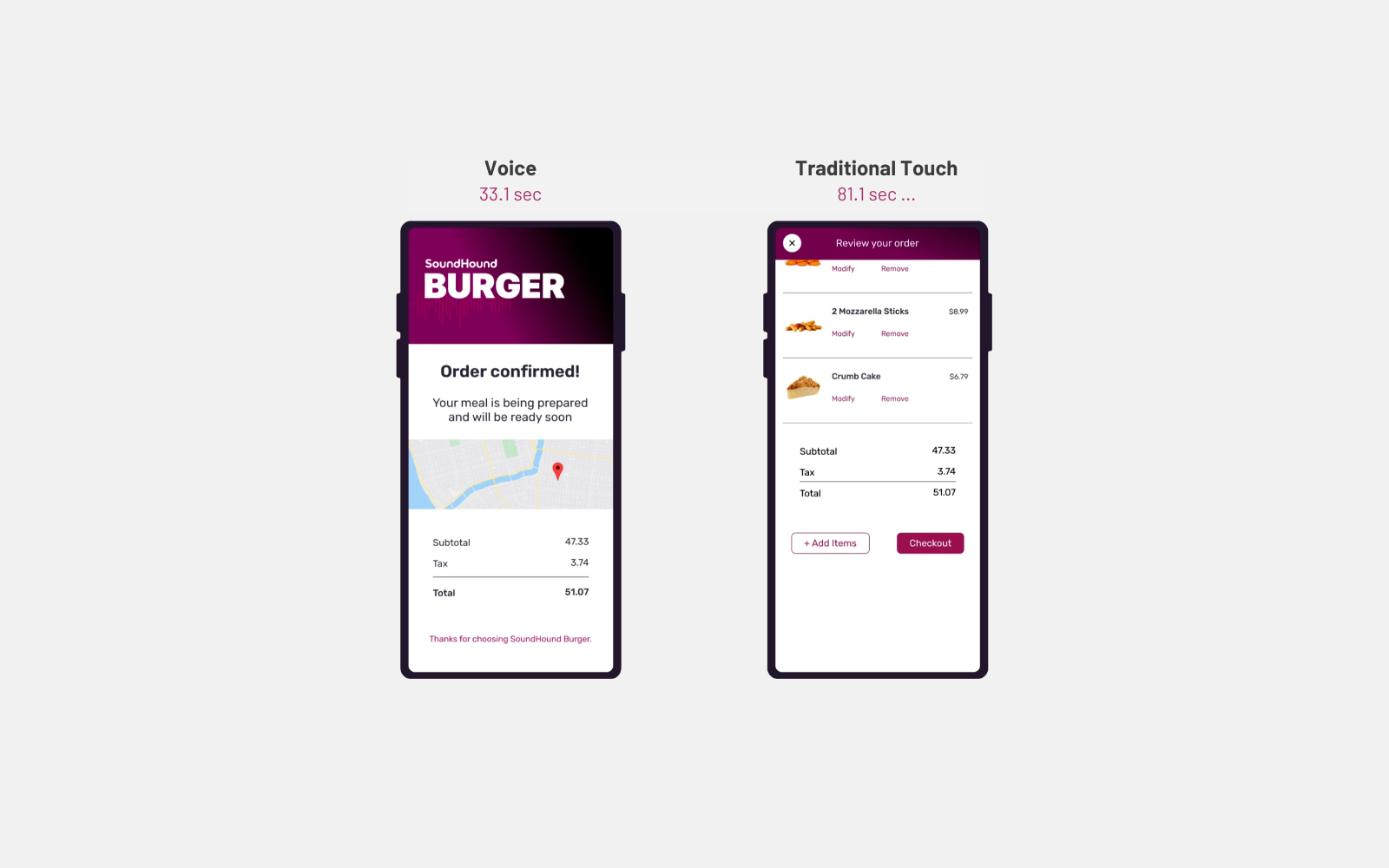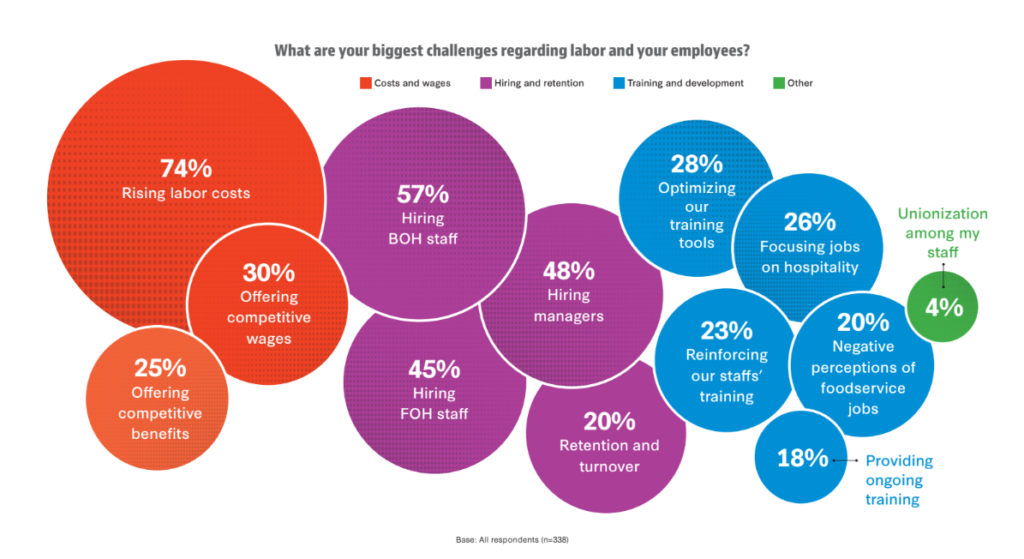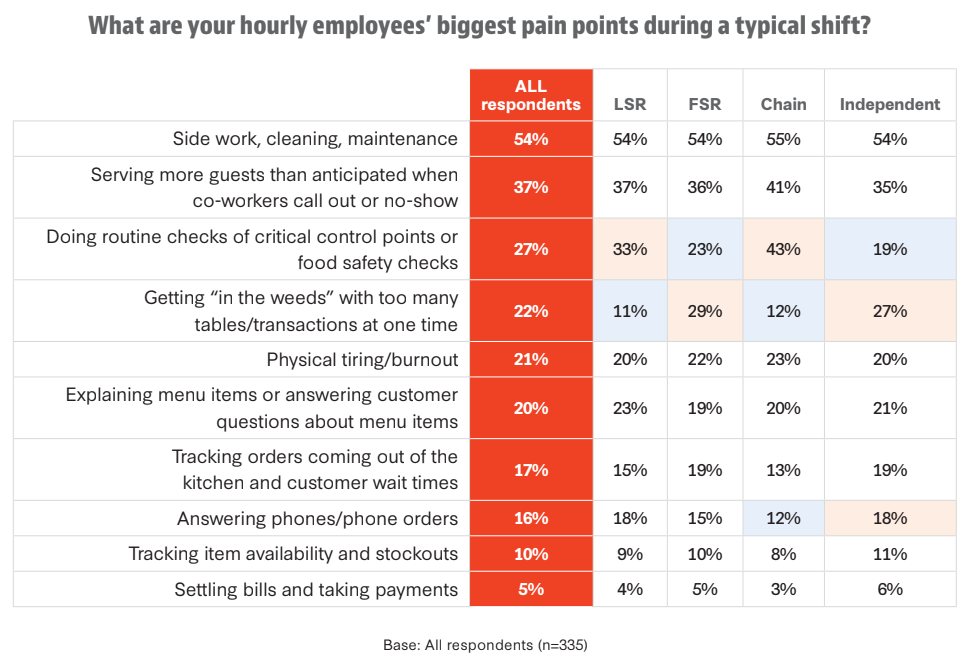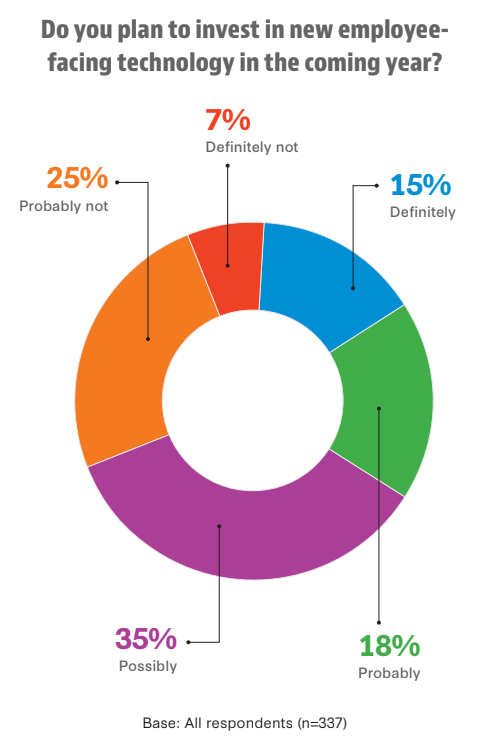
3x Faster Food Ordering With Voice AI vs. Touch-Based Mobile Apps (Video Comparison)
Check out how voice AI outperforms traditional touch-based mobile apps in food ordering speed and accuracy in this side-by-side comparison video.
Products
Our Platform
SoundHound’s independent voice AI platform is built for more natural conversation.
Solutions
For Every Industry
Find a customizable and scalable voice AI solution for your industry or use case.
Resources
Get the latest voice AI news, keep up on trends, get expert advice, and discover new solutions.
Our Company

Frost & Sullivan Names SoundHound AI a Leader for Enterprise Conversational AI in Healthcare 2024

SoundHound AI was a sponsor of Restaurant Business’s November 2024 Market Leader Report titled, “The Restaurant Labor Landscape: Operator Insights and Profitability Strategies.” Technology, specifically voice AI and automation, emerged as necessary components of labor strategies moving forward.
Restaurant operators have been facing labor shortages for years. Now, operators face an additional challenge: rising wages.
In September 2024, Restaurant Business surveyed more than 330 foodservice operators across full-service, limited-service, chain, and independent restaurants. Respondents almost unanimously indicated that the rising cost of labor was a major challenge that will continue throughout 2025.

The rapid and significant increase in employee wages is severely impacting operators’ bottom lines. To face this challenge, operators have had to employ new labor strategies – primarily focused on employee retention instead of hiring – to maintain profitability and productivity.
In this blog post, we will unpack the labor strategies that restaurant operators have implemented so far. We also will explore operators’ growing interest in deploying voice AI and automation technology, like SoundHound AI’s restaurant solutions, as part of their labor strategy going forward.
Falling second only to “raising menu prices judiciously” as a top strategy for preserving profitability in a tight labor market, 48% of operators indicated that they focused on cross-training employees over the past year.
By cross-training employees, operators aimed to increase the total productivity they could achieve from current staff to save on labor costs and preserve profit margins.
In 2025, more than 74% of operators expect wages to increase. As such, maintaining a steady headcount and cross-training will continue to reign as a top labor strategy.
By its very nature, the hospitality industry fosters a high-pressure work environment. Most employees expect this when they take on the job.
However, even the most seasoned employees have a limit to how much they can take on in a single shift.
Restaurant operators are aware of the challenges their workers face. According to the survey, operators believe their employees’ biggest pain points during a shift relate, in general, to being overtasked. For example, perceived pain points include:

It’s true that cross-training employees allows restaurants to operate with a leaner team. However, it’s critical that operators don’t push existing employees to the point of dissatisfaction, burnout, or quitting.
Since retention is the name of the game, operators instead need to employ a labor strategy that strikes a balance between cross-training existing staff and leveraging technology to fill the gaps.
In previous years, investing in technology was not among the top strategies for operators looking to manage profitability and productivity.
Looking ahead to 2025, however, it appears more operators are interested in seeing how technology, such as voice AI and automation, can contribute to their growth, improve operations, and help retain employees.

The investments that restaurant operators make today in voice AI and automation can drive long-term business growth and smoother operations.
For example, SoundHound’s voice AI solutions for restaurants, such as Smart Ordering and Dynamic Interaction™, increase customer service efficiency and drive revenue growth by automating food ordering over various channels, including phone, drive-thru, and kiosks.
SoundHound AI Senior Vice President, Ben Bellettini, joined the researchers and co-sponsors of the Restaurant Business Market Leader Report for a webinar to further illustrate the impact of voice AI for restaurants. Below are some of Ben’s key insights.
We welcome the opportunity to be a part of your restaurant’s AI journey. Contact us today to get in touch with our experts. To learn more about our solutions for restaurants, explore our Restaurants page.
Subscribe today to stay informed and get regular updates from SoundHound Inc.